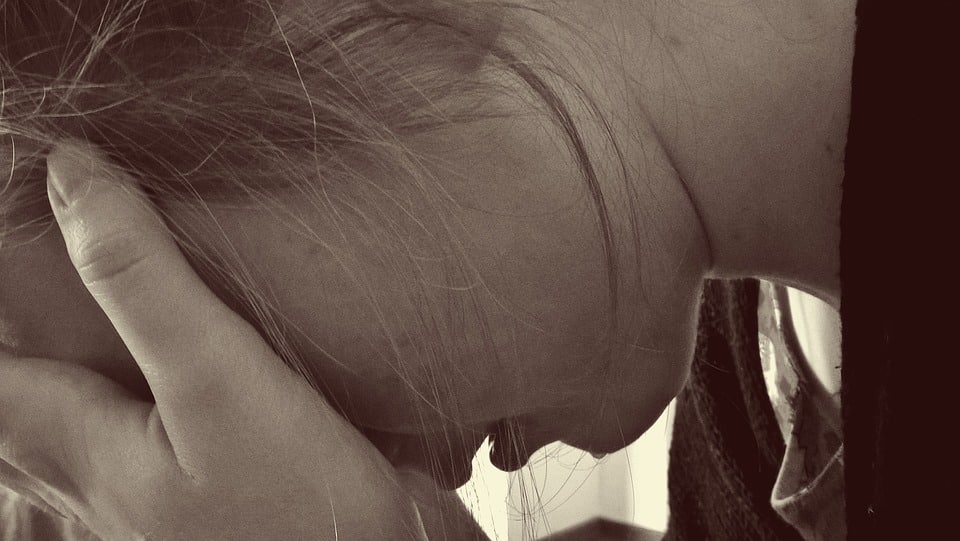Are you more tired than usual? Do you wonder why your kids’ cold symptoms linger longer than it seems they should? Do you suffer from headaches or unexplained skin rashes?
Symptoms of mold exposure vary from person to person, and reactions to mold may be immediate or delayed. How can you know if mold is making your family sick? Let’s start by learning a little bit more about mold and its effects.
What is mold?
Mold is a type of fungus which comes in many varieties, including a vivid palette of colors: black, white, orange, green or purple. Mold plays an important role in a healthy outdoor ecosystem by breaking down dead plants and trees.
Mold needs moisture to grow. It reproduces by producing microscopic spores that travel through the air. We are exposed to tiny mold spores every day, which we cannot see, and they are usually harmless. The problem comes if a spore lands in a damp spot in your home and starts to grow. The resulting mold may release an explosion of spores, which may become concentrated in a relatively small indoor space.
Mold occurs indoors in places that tend to be damp – bathrooms, kitchens, laundry rooms, basements, and crawl spaces are all common breeding grounds. Mold grows indoors when the moisture content is prolonged, due to flooding, plumbing problems, leaks, or even water vapor from hot showers or from cooking that is not dispersed quickly enough. Exposure occurs when a person breathes in the microbial spores or by direct skin contact with spores.
Although you cannot see the tiny mold spores that may be collecting in your indoor spaces, you can see the mold that may be producing those spores. Those slimy black spots on your shower curtain? What about the fuzzy gray patches on the ceiling of your bathroom or basement? The slick orange mold that collects on your kitchen drain or under the lip of the sink? Black patches in the back of a wooden closet or along wooden floorboards? These spots are not ‘clean’ dirt, but patches of mold.
What are the symptoms of mold exposure?
Symptoms of mold exposure can vary widely. Reaction to mold depends on a person’s genetic sensitivity, the type and concentration of mold, the duration of the exposure, and the age of the person who has been exposed. Infants and children, the elderly, and people with compromised immune systems are at greatest risk; however, even healthy and non-allergic people will suffer adverse health effects of extensive exposure to mold spores.
In general, mold exposure happens indoors and so you may notice that symptoms worsen in the compromised space. Sometimes mold releases a musty, damp smell. A mold professional may diagnose the mold levels in your home and may be especially helpful if you notice musty odors but can’t find the cause.
Common symptoms of mold exposure include:
- Head pain
- Allergic symptoms
- Cold-like symptoms (runny nose, coughing, sneezing)
- Inflamed or stinging eyes
- Skin rashes
- Fatigue
- Chronic asthma symptoms
- Fever
- Labored breathing
Tips for removing mold from home surfaces:
The bad news is that almost every home gets mold. The good news? Most mold can be removed with ordinary household cleaning products.
Here are some FAQs to guide you through the mold removal process:
Is it mold or dirt?
Drip a few drops of household bleach onto a discolored area. If the discoloration lightens after one or two minutes, you are dealing with mold. If the area remains dark, you are probably dealing with accumulated dirt.
When do I need to call a mold professional?
If you have an extensive mold problem covering more than 10 square feet, or mold which seems extreme in odor or depth, consider calling a Davis County mold cleanup specialist. Dealing with heavy doses of mold spores requires specialized safety equipment.
What cleaning product should I use?
You can use a commercial mold/mildew cleaner and follow the instructions on the packaging, but chlorine bleach and water work just as well at a fraction of the cost. Other equally practical options include diluted hydrogen peroxide, distilled white vinegar, or baking soda mixed with borax. Each of these products may have slight advantages in dealing with different surfaces that need to be cleaned, but they are basically interchangeable.
Do I rinse away the cleaning product after cleaning?
No. Leaving a bit of the product behind may inhibit future mold growth
What about removing mold from clothes or fabric furniture?
Go outside, if possible, to prevent spreading spores inside your home. Use a brush to brush away as much mold as you can. Following the care label, wash clothing items or furniture surfaces in the hottest water recommended and a disinfectant. A solution of oxygen bleach and water may remove stains.
How do I remove mold from leather?
Go outside and wipe the leather with distilled white vinegar. Then use a good leather soap and warm water. Dry with a cloth before allowing a complete air dry. Treat with a leather conditioner.
How can I remove mold from bathroom surfaces?
Mix one part bleach to 16 parts water (i.e., one cup of bleach to one gallon of water) and apply to mold-affected areas. Leave for at least 15 minutes before scrubbing – if scrubbing is needed at all. If the mold is gone, there is no need to even rinse the bleach away.
What is a hygrometer, and should I own one?
A hygrometer is an inexpensive instrument (<$10) available at many hardware stores. Hygrometers are small enough to fit on your palm and are portable. They are used to measure indoor humidity levels, which should not exceed 60% in your home. Is a hygrometer for you? It may provide some peace of mind. A hygrometer will not rid your house of pre-existing mold, but can let you know if your home is relatively safe from future mold collections.

